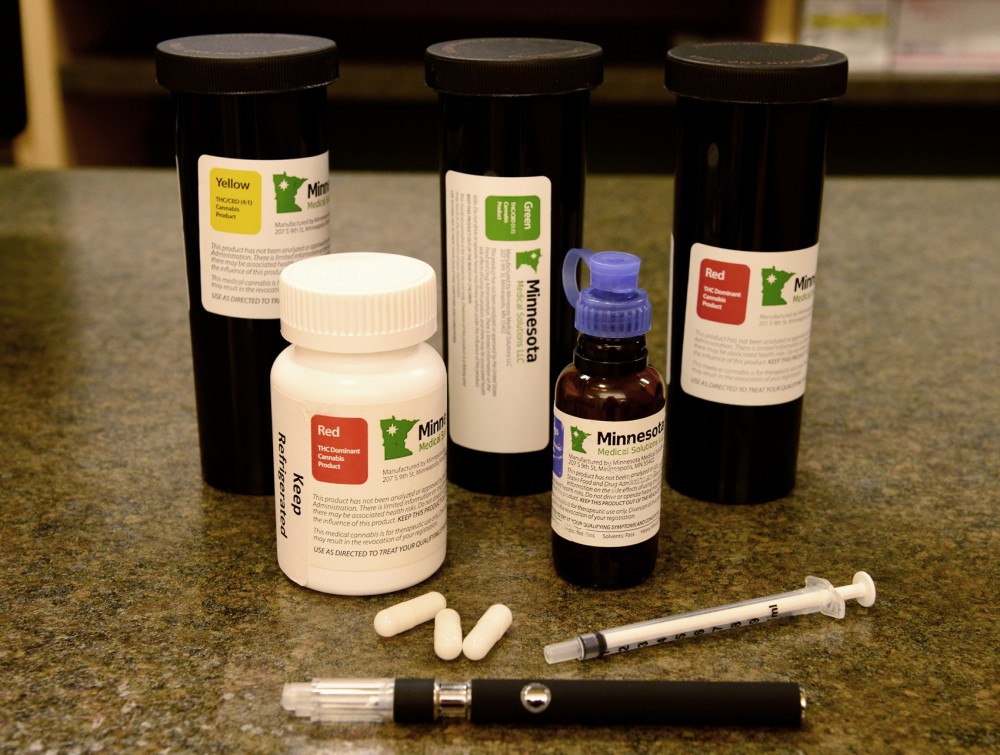Though medical marijuana made its debut in Minnesota this summer, patients hoping to use the drug to relieve ongoing pain aren’t yet qualified for use.
But that could change by the end of the year if intractable pain, a symptom untreatable by traditional medicine, is added to the list of qualifying conditions.
On Tuesday, Minnesota Health Commissioner Ed Ehlinger will host a meeting to collect public comment about recommendations from the Department of Health’s Advisory Panel on Intractable Pain.
Public comments posted to the MDH website since September show almost unanimous support for legalizing cannabis use for intractable pain management, citing lowered costs and risks as compared to opiate drugs traditionally used in pain management as reasons for accepting the new condition.
MDH will extend the option to provide public comment at the meeting next week.
“We’ve done a lot of town hall meetings around the state to hear how the public feels about this,” MDH Office of Medical Cannabis Director Michelle Larson said, adding that response has been positive from those who live with intractable pain.
But some, like Minnesota Medical Solutions marijuana dispensary CEO Kyle Kingsley, say they’re concerned expanding the list of qualifying conditions for medical cannabis will lead to recreational use.
“We don’t want Minnesota to be like Colorado or California because we don’t think that’s the medical approach,” Kingsley said.
He said he still worries patients suffering from pain won’t have access to the drug.
Because marijuana is a Schedule I drug — substances considered most dangerous and classified as illegal on a federal level — its prescription works through a registration and approval process involving physicians, officials at the Minnesota Office of Medical Cannabis and pharmacists, Larson said.
If a patient suffers from one of nine qualifying conditions, which could include cancer, epilepsy or Crohn’s Disease, she said, they can register their personal information with the state and work with a dispensary pharmacist to determine which type of cannabis will be best to treat their condition. Most patients are older than 50 years of age, Larson said.
“Our law is probably one of the most conservative laws that I’ve seen,” she said. “With it, you cannot be a personal cultivator; you have to get cannabis from one of two approved manufacturers, and the cannabis is limited to liquids, pills and vaping.”
Nevertheless, University of Minnesota medicine professor and cannabis researcher Kalpna Gupta has seen support from the state government for medical cannabis and related research.
“We received [grant] approval in record time,” she said. “Our grant was funded on first submission. We submitted it in May 2012, and we enrolled our first patient in 2014.”
Gupta’s ongoing randomized placebo trial follows 35 patients with one of nine conditions who are randomly assigned to receive either vaporized cannabis or a placebo.
After two weeks, the treatment and control groups are switched so each patient will consume both treatments, allowing researchers to determine whether cannabis effectively treats pain.
Despite his reservations, Kingsley said existing medical research shows cannabis is effective in pain management and safer than opiates in controlling pain.
“Opiates are a scourge on our society,” he said. “Many thousands of people die each year from overdoses, and if cannabis can replace even a fraction of that, that’s a good thing.”








